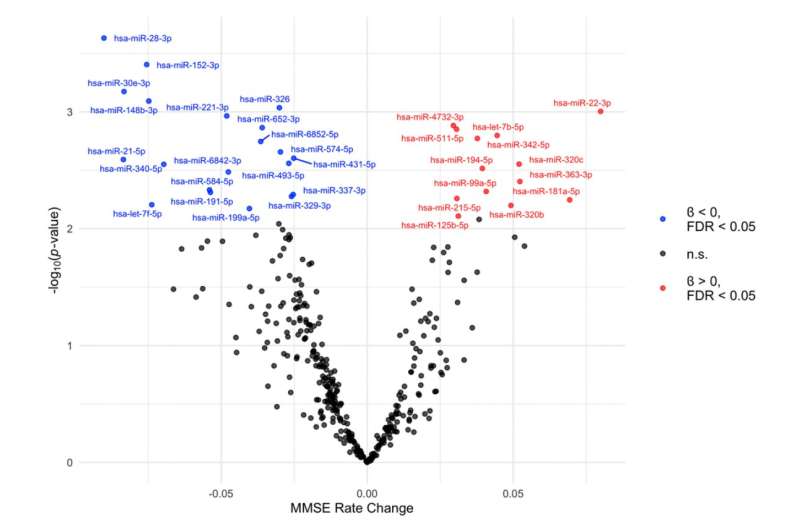Extracellular microRNA and cognitive function in a prospective cohort of older men

Aging-related cognitive decline is an early symptom of Alzheimer’s disease and other dementias, and on its own can have substantial consequences on an individual’s ability to perform important everyday functions. Despite increasing interest in the potential roles of extracellular microRNAs (miRNAs) in central nervous system (CNS) pathologies, there has been little research on extracellular miRNAs in early stages of cognitive decline.
In a new study titled “Extracellular microRNA and cognitive function in a prospective cohort of older men: The Veterans Affairs Normative Aging Study” and published in Aging, researchers leveraged the longitudinal Normative Aging Study (NAS) cohort to investigate associations between plasma miRNAs and cognitive function among cognitively normal men.
“In a cohort of older men from Massachusetts, we investigated associations between plasma miRNAs and global cognition and rate of global cognitive decline measured by the MMSE,” the authors write.
This study includes data from up to 530 NAS participants (median age: 71.0 years) collected from 1996 to 2013, with a total of 1,331 person-visits (equal to 2,471 years of follow up). Global cognitive function was assessed using the Mini-Mental State Examination (MMSE). Plasma miRNAs were profiled using small RNA sequencing. Associations of expression of 381 miRNAs with current cognitive function and rate of change in cognitive function were assessed using linear regression (N = 457) and linear mixed models (N = 530), respectively.
In adjusted models, levels of two plasma miRNAs were associated with higher MMSE scores (p < 0.05). Expression of 33 plasma miRNAs was associated with rate of change in MMSE scores over time (p < 0.05). Enriched KEGG pathways for miRNAs associated with concurrent MMSE and MMSE trajectory included Hippo signaling and extracellular matrix-receptor interactions. Gene targets of miRNAs associated with MMSE trajectory were additionally associated with prion diseases and fatty acid biosynthesis.
Source: Read Full Article
